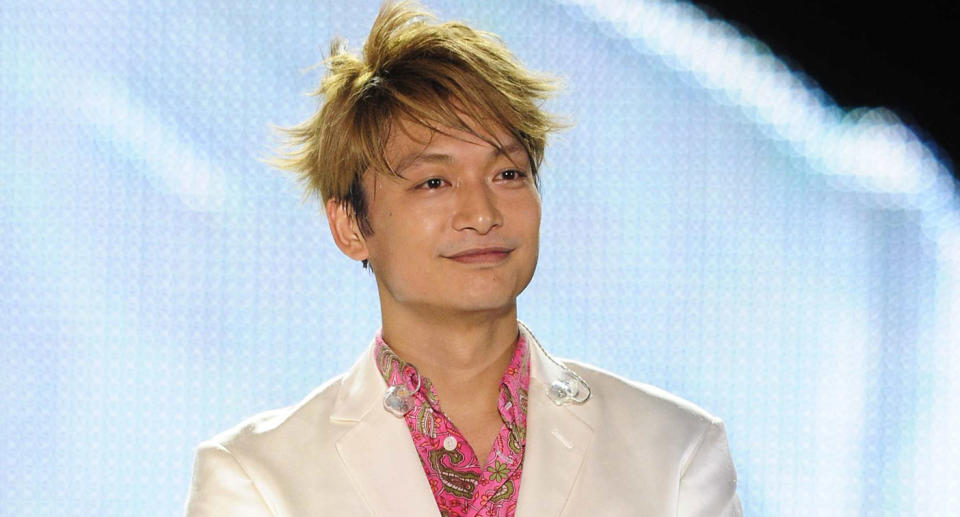SMAP Star's Instagram Foray Marks Weakening Grip of Japan TV Ads

By Stephen Stapczynski, Grace Huang and Lisa Du
Shingo Katori commanded the adoration of millions of fans across Asia as a member of SMAP, one of Japan’s most successful boy bands. After decades as a ubiquitous TV presence, he finally decided in November it was time to get an Instagram account.
A small step for one celebrity highlights a sea change for the advertising industry in Japan, which has lagged much of the developed world in switching from old to new media. Katori, now a solo performer, has promoted everything from beer to cars on TV – now he also has more than a million followers on Instagram alone.
“I was raised on TV for 30 years,” Katori, 41, said in an interview with Bloomberg in Tokyo. “But now I spend half my time on social media and watching streaming services.”
An aging population loyal to a handful of terrestrial television channels has helped keep Japan’s TV commercial revenues stable, even as digital advertising overtakes TV on a global basis. Now Japan’s stronghold is beginning to crack.
Japan’s digital video ads market is set to more than double by 2023 to 348.5 billion yen ($3.3 billion) as Japan’s youth watches less and less television, according to CyberAgent Inc., which operates an Internet advertising business and also owns the online streaming website AbemaTV.
“The reach to younger viewers isn’t growing on TV, so for products geared towards young consumers, it makes more sense to go to other media formats,” said Hidenori Sakai, director for CyberAgent’s online video advertising research department. The amount of money spent on Internet advertising has more than doubled since 2009, while TV ads have stagnated, according to a report published by Dentsu Inc. on Feb. 22.
“Internet ad spending will eventually top that for television,” said Toshiyuki Kitahara, a consulting director at Dentsu who helped compile the report. “It isn’t a matter of if, but when. Ad spending on Internet is already higher in places like the United States. Japanese television has historically been strong, which explains the delay.”
Japan’s powerful talent agencies have also been resistant to social media. Katori’s joining the world of Instagram and Twitter coincides with him leaving his talent agency, Johnny & Associates, in September. The singers and actors who the management firm represents tend to have no social media presence.
Earlier this year Johnny’s started authorizing some publicity pictures of their clients to be published on websites, according to the agency’s spokesperson.
Cosmetics maker Shiseido Co. is among the established Japanese companies shifting advertising toward the digital realm, setting up a social media presence and recruiting influencers to promote their product on their accounts.
Newer enterprises like craft beer pioneer Yo-Ho Brewing Co., launched two decades ago, have grown up on Internet advertising. Its sales more than doubled in the three years after 2011, when it began using social media as a way to reach consumers. Beer giant Kirin Holdings Co. took about a 30 percent stake in the company in 2014.
Being able to engage with fans on Facebook, Twitter and Instagram has helped bolster demand when Yo-Ho releases new beers, said brand manager Satoshi Inagaki. It also means the company spends next-to-nothing on advertising.
“TV is effective for increasing awareness of a product and getting people to purchase it, but after that if customers start wondering more about the brand, that’s where social-media marketing comes in,” Inagaki said.
Digital agencies have sprung up to grab the new opportunities – among them Tokyo-based UUUM Inc., a management company for YouTubers that raised 1.22 billion yen in an initial public offering last year. The firm’s net income for the six months ended Nov. 30 was 159 million yen, beating its forecast by over six-fold, it said in January.
They will have no shortage of upcoming talent to choose from – according to a recent survey by Sony Life Insurance Co., Japan’s middle-school boys ranked becoming a YouTube celebrity as the third-most desirable career path.
Internet advertising spending grew by 74 percent between 2012 and 2017, according to Dentsu, while spending on TV commercials rose by 3.8 percent over the same period.
To be sure, television advertising will continue to be a necessity for many brands in Japan to tap the older demographic. Japanese aged 65 and over make up more than a quarter of the population and the proportion is set to grow to 30 percent by 2025 and 35 percent by 2040, according to the National Institute of Population and Society Security Research.
Even with the increase in the TV-watching senior population, average television viewing time per household dropped about 2 percent between 2013 and 2015 to 441 minutes per week, the latest data from Dentsu show.
Daily Instagrams
Katori’s career was built on best-selling music albums and three decades of television appearances. Nowadays, he says he tries to post an Instagram photo a day – usually selfies or items he likes – and is still learning about new functions, while also appearing in YouTube videos and on streaming Internet channels with former band-mates.
“I’m a night owl so I was worried that I was bothering people when I posted late at night,” said Katori, who was wearing a white jacket printed with cartoony pink rabbits and storm clouds. “So I asked my fans if I should be more careful about when I post. They told me not to worry – time doesn’t matter in the world of social media.”
To contact the reporters on this story: Stephen Stapczynski in Tokyo at sstapczynsk1@bloomberg.net; Grace Huang in Tokyo at xhuang66@bloomberg.net; Lisa Du in Tokyo at ldu31@bloomberg.net
To contact the editors responsible for this story: Ramsey Al-Rikabi at ralrikabi@bloomberg.net; Andrew Monahan at amonahan@bloomberg.net; Isabel Reynolds, Ken McCallum
© 2018 Bloomberg L.P

 Yahoo Finance
Yahoo Finance 